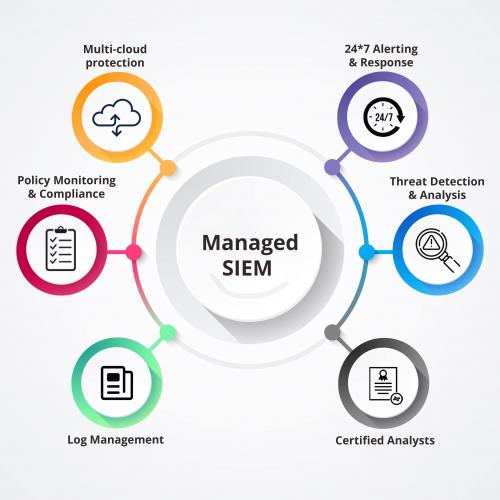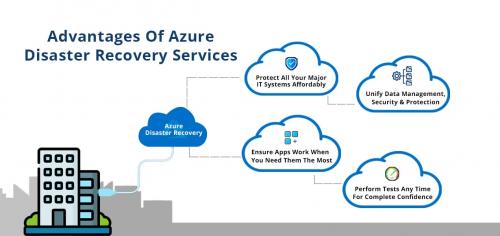Top 5 Best Practices for Managed SIEM

Top 5 Best Practices for Managed SIEM
Modern cybersecurity methods need the use of Security Information and Event Management (SIEM) technologies. They gather, examine, and react to security events that occur within the IT infrastructure of an enterprise. Specifically, managed SIEM services provide the know-how and tools required to maximize SIEM capabilities without overburdening internal teams. The top five recommended practices that businesses should adhere to to optimize the advantages of managed SIEM are listed below.
The advantages of managed SIEM services
The following are the 5 best practices that should be followed to maximize the efficiency and productivity of businesses and brands:
Clearly define the scope and objectives
Setting precise goals and a defined scope is necessary prior to deploying a managed SIEM solution. Organizations must ascertain their goals for using a SIEM system, be it enhancing incident response times, guaranteeing regulatory compliance, or identifying threat kinds. Determining which systems, apps, and data sources will be monitored is part of defining the scope. This clarity guarantees that the managed service provider (MSP) is aware of your unique requirements and aids in the selection of the appropriate SIEM products. It also helps in establishing quantifiable objectives and reasonable expectations for the SIEM deployment.
Combine Extensive Data Sources
The quality and comprehensiveness of the data that an SIEM system examines have a major impact on how effective the system is. Data from many different sources, such as network devices, servers, apps, databases, and cloud services, should be integrated by organizations. With this comprehensive viewpoint, the SIEM can identify and correlate events from various IT infrastructure components, improving threat detection accuracy. Verify that the managed SIEM provider can work with a variety of data sources and that it can enhance and standardize data to improve analysis. Keep abreast of changes in the IT environment by routinely reviewing and updating the data sources.
Implement Robust Incident Response Plans
A well-configured SIEM system not only detects threats but also plays a critical role in incident response. Establishing and maintaining strong incident response (IR) plans that specify what to do if a threat is discovered is important for organizations. Predetermined workflows, escalation protocols, and communication techniques ought to be part of these plans. Make sure the SIEM system can initiate automated responses and notifications based on the kind and severity of incidents by carefully collaborating with your managed SIEM supplier. Test and update the IR strategies frequently to adjust to new threats and modifications to the IT infrastructure.
Constant Observation and Adjustment
The SIEM is not a one-time fix. For the system to continue to function effectively, constant observation and adjustment are required. To identify and address risks in real time, managed SIEM providers ought to provide round-the-clock monitoring. To reduce false positives and false negatives, SIEM rules and correlation algorithms must be tuned regularly. This entails adding fresh threat intelligence, fine-tuning filters, and modifying thresholds. Create a schedule for analyzing SIEM performance indicators and meet with the MSP frequently to talk about enhancements and resolve any problems.
Utilize Security Information
Your SIEM system can identify and react to more sophisticated attacks more effectively if threat intelligence is integrated into it. Threat information offers perceptions into malicious IP addresses, well-known attack paths, and new patterns in threats. SIEM systems can more effectively detect suspicious activity and link it to known risks by integrating this data. Select a managed SIEM supplier with access to reliable, current threat intelligence feeds. Encourage cooperation between your internal security team and the MSP to exchange pertinent threat intelligence and promptly respond to emerging risks.
A strong cybersecurity plan must include managed SIEM services, which offer the knowledge and tools required to efficiently monitor and react to security events. Organizations can optimize the advantages of their managed SIEM systems by setting clear goals, including extensive data sources, putting strong incident response strategies into place, making sure that ongoing monitoring and tweaking is done, and utilizing threat intelligence. By adhering to these best practices, you may improve threat detection and response capabilities while also making sure that the SIEM system changes to meet evolving organizational demands and the threat landscape
It's critical for businesses using managed SIEM solutions to improve their cybersecurity posture to adhere to these recommended practices. By collaborating with a reputable and knowledgeable managed SIEM provider, you can make sure that these procedures are followed correctly and continue to offer a strong defense against online threats and peace of mind. Get in touch with CloudIBN right now to find out how our managed SIEM services can keep your business safe and ahead of emerging threats.


Comments